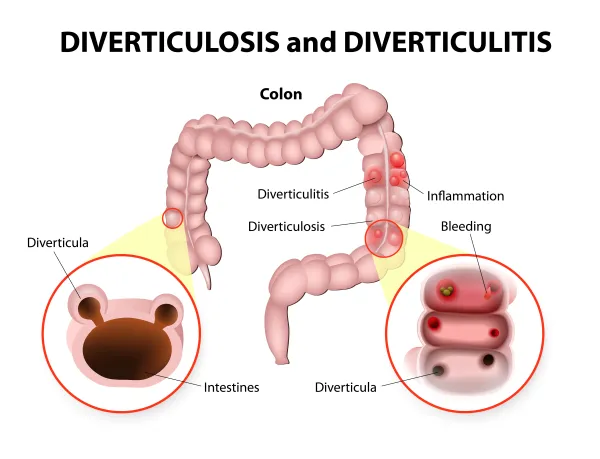5 Q&As; Take the Pain Out of Hemorrhoid Procedure Coding
Location takes precedence over all other conditions, even number.
While reporting hemorrhoid treatment procedures,you can feel daunted sometimes when confronted with so many codes to describe hemorrhoidectomy and yet another for hemorrhoidopexy -- a closely related but distinct procedure. Fear not. Asking yourself these five questions will help you distinguish hemorrhoidectomy procedures for your practice.
1.Where Are the Hemorrhoids Located?
Before choosing a hemorrhoidectomy code, you must know whether the hemorrhoids the physician removed were internal, external, or a combination of both types.
Internal hemorrhoids: These originate above the dentate line (a mucocutaneous junction that lies about 1 to 1.5 cm above the anal verge). The most obvious code for internal hemorrhoid removal you can choose is:
This is by far the most common hemorrhoid removal procedure. During the treatment, the physician ties off or ligates the hemorrhoid at its base, which cuts off its blood supply and causes it to shrink over time. One other option is:
In this procedure, the physician injects a sclerosing solution into the submucosa of the rectal wall under the hemorrhoid. Once again, this reduces blood flow to the area and causes the hemorrhoid to shrink. You can also employ a general code available for any method of destruction other than ligature or sclerosing solution. Such methods could include using electrical current or infrared radiation, for instance.
External hemorrhoids: These originate below the dentate line and can call for a greater variety of treatment options.
Remember: Your physician’s documentation should explicitly state the location of the hemorrhoids he treats. If the documentation is not clear, be sure to ask the physician for details. You can’t select a proper code without this knowledge.
Watch out: If the physician used a local anesthetic, that might be a tip-off that he treated an external hemorrhoid because internal hemorrhoids can usually be treated without pain.
2.Is There a Mention of Thrombosis?
If the physician treats external hemorrhoids, you must consider whether the hemorrhoids are thrombosed (clotted). When treating a thrombosed external hemorrhoid, the physician has three options:
Note: If a patient presents with symptoms of pain, you are generally dealing with a thrombosed hemorrhoid.
Non-thrombosed options: If the physician removes non-thrombosed, external hemorrhoids via excision, you should select code 46250 (Hemorrhoidectomy, external, 2 or more columns/groups) .
3.What if the Notes Show Both External and Internal?
When the physician excises both external and internal hemorrhoids during the same session, you won’t select one of each code from the external and internal excision codes.
The best course: You should use CPT® code 46255 (Hemorrhoidectomy, internal and external, single column/group) or 46260 (Hemorrhoidectomy, internal and external, 2 or more columns/groups).
Based on the number and size of hemorrhoids removed, the physician must make a subjective judgment to choose 46255 or 46260. To support your coding claim, you must be sure that the physician’s documentation justifies the selection of 46260 by noting the determining factors.
4. How Many Units Do I Report?
In all but a few cases, you will only report a single unit of a single code to describe hemorrhoid removal — even if the physician removes multiple hemorrhoids during the same session.
The descriptors for both 46500 and 46930 specify “hemorrhoids” (plural). Therefore, you should report these codes only once per session, regardless of how many hemorrhoids the physician treats. Similarly, 46250 can describe removal of a single or several hemorrhoids.
Codes 46255 and 46260 likewise apply to single or multiple removals during the same operative session. In other words, if the physician excises two internal hemorrhoids and one external hemorrhoid during the same operation, you should report only a single unit of 46255.
Exception: Unlike other methods, the excision and I&D of a thrombosed hemorrhoid (46083, 46320) describes only one removal. If the physician removes one or more additional thrombosed hemorrhoids, you should bill them separately, using 46083 or 46320, as appropriate.
5.How do I Differentiate Between -opexy and -ectomy?
You should be careful not to confuse hemorrhoidopexy -- an alternative method for treating prolapsing internal hemorrhoids -- with hemorrhoidectomy as described by the methods discussed above.
During hemorrhoidopexy, also called PPH (procedure for prolapse and hemorrhoids), the physician performs a progressive anal dilation, inserts a circular anoscope into the anus, and then uses a stapling technique to repair the prolapse.
The appropriate code to report this technique is 46947 (Hemorrhoidopexy [e.g., for prolapsing internal hemorrhoids] by stapling).
What to look for: Hemorrhoidopexy does not require that the physician remove the hemorrhoidal tissue, as in a typical hemorrhoidectomy. Therefore, coders should be sure to read operative notes carefully to be sure the physician specifies -stapling- rather than -excision- of the hemorrhoid(s).
Be sure you meet the requirements: The most important factor when reporting 46947 is to prove that the physician tried more conservative approaches first. In addition, Medicare won’t cover PPH unless the prolapsed hemorrhoids are at least Grade III (that is, the hemorrhoid protrudes from the anus during a bowel movement, but can be pushed back into the anus).




